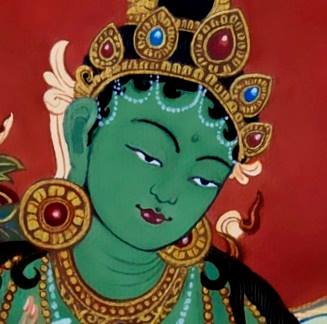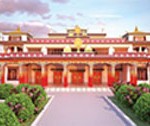The Blessing of Books – The Chöling Tersar Arrives

We are delighted that the 40 volumes of the Chöling Tersar, which literally means the “New Treasures of Chökgyur Lingpa”, have arrived at Gomde Scotland. It is perhaps the only collection available in Scotland. During the ninth century, Buddhism was introduced from India into Tibet and its literature and culture has since been preserved in a way that has been unique in accuracy and truthfulness to tradition. It is in the spirit of wishing to protect and preserve one of the important contributions to the world’s cultural heritage, as well as responding to a growing interest that these books have been brought to Scotland by the Gomde Trust.
The collection owes it name to the great Tibetan Buddhist master of the 19th century. Chokgyur Lingpa lived from (1829-1870) and was regarded by the most reputable living masters of his time as one of the major tertons (revealer of hidden treasures) in Tibetan history. His teachings are widely practiced by both the Kagyu and Nyingma schools of Tibetan Buddhism. The collection of treasures revealed by Chokgyur Lingpa together with its connected teachings are contained in the Chokling Tersar, is a body of literature filling more than forty large volumes. In English translation each of these volumes would be between seven and eight hundred pages and the total would amount to approximately 30,000 pages. The connected teachings included in these forty volumes were written over the last 150 years, chiefly by his contemporaries Jamyang Khyentse Wangpo and Jamgon Kongtrul, as well as by the subsequent upholders of the lineage down until today.
The Chokling Tersar literature is meant to be studied and practiced as an addition to the traditional canonical scriptures of Tibetan Buddhism. These traditional scriptures are found in the Kangyur and Tengyur, the written words of Buddha Shakyamuni and their commentaries by learned Indian Masters. These two collections occupy respectively 104 and 273 large volumes.
In these scriptures are found detailed instructions on how to take full advantage of and imbue human life with its fullest meaning. These revealed scriptures were concealed by the 9th century Buddhist saint Padmasambhava with the expressed wish to be uncovered at specific times in the future. Many of them contain predictions for those times and which particular spiritual practices would be most beneficial for the people of those times.

Filed in Gomde Trust - Scotland No Responses yet






